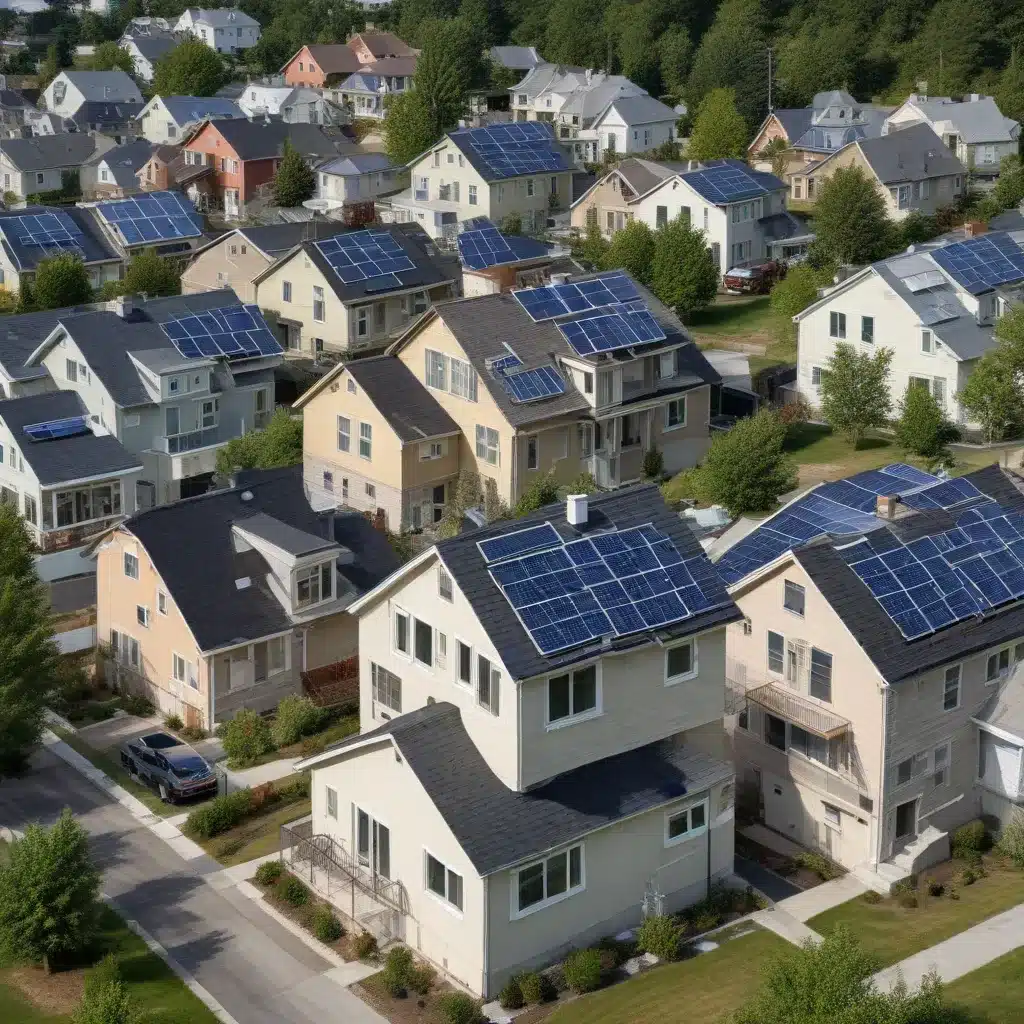
Sustainable Home Energy Flexibility: Leveraging Demand Response and Grid Integration
As Europe accelerates its transition towards a clean energy future, the role of residential consumers is becoming increasingly crucial. Homeowners and tenants are no longer passive participants, but active contributors to the overarching goal of decarbonization. By embracing demand response strategies and seamlessly integrating their homes with the evolving power grid, European households can unlock immense potential for sustainable energy flexibility.
Demand Response Strategies
At the heart of residential energy flexibility lies the concept of demand response—the ability of households to dynamically adjust their energy consumption in response to grid conditions, price signals, or other incentives. This can take various forms, from simple load shifting techniques to sophisticated automated control systems and incentive-based programs.
Load Shifting Techniques: One of the most straightforward demand response strategies involves shifting the timing of energy-intensive activities, such as laundry, dishwashing, or electric vehicle charging, to periods when electricity is more abundant and less costly. By aligning their consumption patterns with times of low grid demand or high renewable energy generation, homeowners can contribute to system-wide load balancing and facilitate the integration of variable renewable sources.
Automated Control Systems: Moving beyond manual adjustments, many European households are embracing smart home technologies that automate energy management. Intelligent thermostats, connected appliances, and energy management platforms can optimize energy usage based on real-time grid conditions, weather forecasts, and user preferences. These systems can automatically modulate heating, cooling, and other household loads, shaving peak demand and providing valuable flexibility to the grid.
Incentive-based Programs: Utilities and policymakers are also driving demand response through innovative incentive structures. Time-of-use pricing, peak pricing, and direct load control programs encourage consumers to shift or reduce their energy consumption during high-demand periods. By aligning financial incentives with grid needs, these programs empower homeowners to become active participants in demand-side management.
Grid Integration Solutions
As the proliferation of distributed energy resources, such as rooftop solar and residential battery storage, continues to transform the power landscape, the integration of these assets with the grid is crucial for unlocking sustainable energy flexibility.
Distributed Energy Resources: Homeowners are increasingly installing solar photovoltaic (PV) systems, battery energy storage, and other distributed energy resources (DERs) on their properties. By effectively managing and coordinating these DERs, either individually or in aggregation, utilities and grid operators can leverage their flexibility to provide valuable grid services, such as frequency regulation, voltage support, and peak shaving.
Smart Grid Technologies: Advancements in smart grid infrastructure, including advanced metering, communications networks, and distribution automation, are enabling greater visibility and control over residential energy consumption and generation. These technologies allow for bidirectional energy flows, real-time monitoring, and sophisticated control algorithms that optimize the grid’s interaction with home-based DERs.
Renewable Energy Integration: As the European Union strives to increase its share of renewable energy, the seamless integration of residential solar, wind, and other distributed generation resources becomes paramount. By aligning household energy consumption and production patterns with the grid’s evolving needs, homeowners can contribute to the stability and resilience of the power system, while also maximizing the value of their own renewable energy investments.
Energy Efficiency Measures
Alongside demand response and grid integration, energy efficiency measures play a crucial role in enhancing the flexibility and sustainability of residential energy systems. By optimizing the energy performance of homes, homeowners can reduce their overall energy consumption, lowering the demand for grid-supplied electricity and creating more headroom for the integration of variable renewable sources.
Building Envelope Optimization: Improving the thermal efficiency of a home’s building envelope, through measures such as enhanced insulation, air sealing, and high-performance windows, can significantly reduce heating and cooling loads. This, in turn, decreases the demand for energy-intensive HVAC systems, making it easier to manage fluctuations in renewable energy supply.
Appliance and Lighting Upgrades: Replacing aging, inefficient appliances and lighting fixtures with Energy Star-certified or other high-efficiency models can dramatically reduce a household’s electricity consumption. These upgrades not only lower energy bills but also create more headroom for demand response and grid integration strategies.
Intelligent Energy Management: The integration of smart home technologies, such as energy management systems, connected appliances, and advanced meters, enables sophisticated monitoring and control of residential energy use. By providing real-time data and automated optimization, these systems help homeowners identify and address energy-saving opportunities, further enhancing the overall flexibility and sustainability of their homes.
Residential Energy Storage
As the adoption of renewable energy sources accelerates, residential energy storage solutions are emerging as crucial enablers of sustainable energy flexibility. By storing excess renewable energy generation and strategically discharging it when needed, homeowners can maximize the utilization of their own clean energy resources while also supporting the wider grid.
Battery Energy Storage Systems: Battery energy storage systems (BESS), integrated with rooftop solar or connected to the grid, allow homeowners to store excess electricity for later use. These systems can be programmed to discharge during periods of high demand or when grid-supplied electricity is more costly, contributing to load balancing and cost optimization.
Thermal Energy Storage: In addition to electrical storage, thermal energy storage technologies, such as heat pumps and thermal energy storage tanks, can store thermal energy for space heating and domestic hot water. By shifting thermal loads, homeowners can further enhance the flexibility of their energy consumption patterns.
Vehicle-to-Grid Integration: The growing adoption of electric vehicles (EVs) presents another opportunity for residential energy storage and grid integration. Through vehicle-to-grid (V2G) technology, homeowners can use their EVs’ batteries as a flexible energy storage resource, feeding electricity back to the grid when needed and charging during off-peak hours.
As the European Union continues its push towards a sustainable energy future, the active participation of residential consumers will be crucial. By embracing demand response strategies, seamlessly integrating their homes with the power grid, and implementing energy efficiency measures, European households can unlock a new era of sustainable energy flexibility, contributing to the overall resilience and decarbonization of the continent’s energy landscape.







